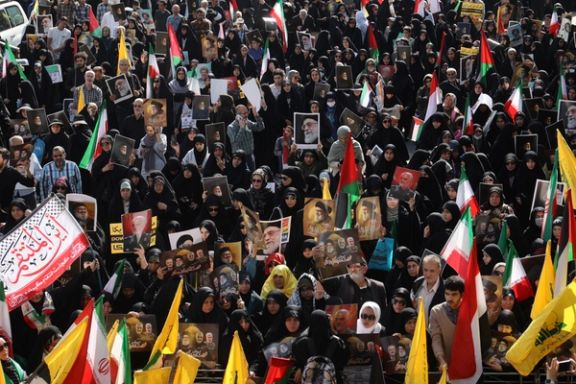Some speculated that Supreme Leader Ali Khamenei's prominent appearance to lead Friday prayers in Tehran on October 4 might signal a new era, potentially marked by Iran's withdrawal from the Non-Proliferation Treaty (NPT), as hardliners on state TV suggested. There was also widespread anticipation that Khamenei could announce the weaponization of Iran’s controversial nuclear program. On social media, some Iranians even suggested that Khamenei's next move might be pursuing the development of a nuclear bomb.
Political analysts were less direct than social media users in their assessments. International relations analyst Reza Nasri conveyed a nuanced perspective to Etemad newspaper in Tehran, suggesting that "Iran's defense doctrine operates independently of public sentiment. Decisions are made at higher levels of the political structure, likely referring to Khamenei's office, based on all indications. Nonetheless, the regime has yet to make a definitive decision regarding the pursuit of nuclear weapons."
According to Etemad, the IRGC's Javan newspaper, however, wrote in May that "The strategic implication of the rhetoric surrounding a shift in Iran's defense doctrine is that, regardless of whether we possess nuclear weapons, the United States should recognize Iran as a nuclear power, given our capacity to develop them. This approach effectively sidesteps the ongoing discourse about the nuclear issue."
However, the greatest fear for a nation still haunted by the memories of the 1980s Iran-Iraq war is that escalating military actions between Iran and Israel could spiral into a prolonged and far more destructive conflict.
Iran kept the aviation industry was kept in the dark about the imminent attack. Videos on social media show passenger aircraft changing route over Urmia and landing in Shiraz against a backdrop of missiles flying in the sky despite the obvious danger, creating further terror for Iranians.
Iranian Foreign Minister Abbas Araghchi told reporters in Tehran that the government let the United States know about the attack via the Swiss Embassy in Tehran after it was done. However, it was the United States that informed the world of the upcoming attack more than two hours in advance.
Aviation experts on social media revealed that Iranian airspace was finally cleared only at the end of the missile attack. In the meantime, some failing missiles dropped in areas including Zanjan near Tehran.
Some Iranians reminded the government that Israel has provided bomb shelters for its citizens while if missile strikes occur in Iran, the people have no shelter other than the basements of high-rise buildings where they could possibly be buried alive in heavy bombardments. The call for shelters and a demand for briefings by officials on the situation was made repeatedly on social media. Lack of concrete and accurate reporting by the official media outlets make the situation even more chaotic and terrifying.
Speculations on what exactly Israel's reaction to Iran's attacks might be are even more terrifying for ordinary Iranians. Iranian social media user Ehsan Soltani, a student in Middle east Studies at the University of Venice, summed up some of the possible scenarios as: "Attacks with deep psychological impact such as the attacks on pagers in Lebanon, strikes on Iran's missile depots, assassination of top military commanders and political leaders, attacks on Iran's nuclear establishments and infrastructure such as refineries."
While none of these scenarios may come to pass, the mere possibility of them is deeply unsettling.








